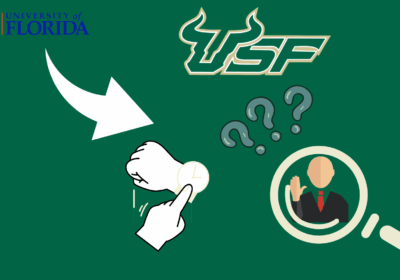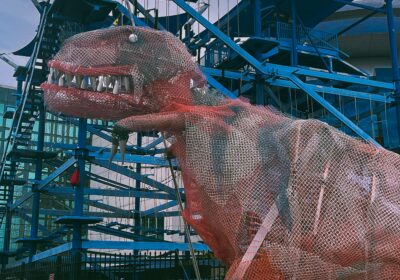Rango is pretty but hollow
“Pirates of the Caribbean” director Gore Verbinski’s “Rango” is guilty of one of cinema’s worst crimes: pulling a bait-and-switch on its audience.
While the trailers for the film portray a movie about a chameleon who finds his way to an old Western town in the desert, which isn’t far off from the actual premise, it’s the character of Rango that leaves the viewer feeling cheated.
For those looking for an intelligent, visually stunning animated film, “Rango” acts as both for the first 20 minutes of its running time. The rest of the film is a steady unbundling of everything that works in its initial stages.
When we meet Rango in his pet aquarium, he’s being projected from the back of his owner’s car onto a major stretch of highway in the Mojave Desert.
A wind-up toy fish, a plastic palm tree and a disfigured doll were the only objects inside Rango’s aquarium that he could call friends. Now, they’re strewn across the dangerous road with the remains of what he once called his home.
Appearing to be acquainted with feelings of disappointment and loneliness, Rango makes his way down the road, taking his recent homelessness in stride.
Once he comes across a mystic armadillo who points him in the direction of a town populated by other animals, Rango is suddenly delighted by the idea of sharing space with others like him.
When he reaches the old Western town of Dirt, one might think his character would begin to develop along with the film’s plot. However, this is where “Rango” takes a nosedive for the worse.
A major plot regarding the town of Dirt’s shortage of water is suddenly introduced, and after Rango is able to con his way into the town’s sheriff position, he sets his sights on solving the crisis.
The only time we focus on Rango as a character again is when it’s convenient. He is increasingly treated more like a tool than an asset to the film’s narrative. As for the town’s water crisis, it never seems nearly as important as the townspeople make it out to be.
What makes Rango’s character even more lifeless is the performance by actor Johnny Depp, who channels the one-note shtick of his previous characters like the Mad Hatter in 2010’s “Alice in Wonderland.”
After scoring an Oscar nomination for his role as Captain Jack Sparrow in Verbinski’s “Pirates of the Caribbean” series, Depp has moved away from the more nuanced performances in films like “Fear and Loathing in Las Vegas,” and instead continues to play variations of his own loony persona. Never has that been more apparent than in “Rango.”
Also populating the town of Dirt are a colorful assortments of household pets, wild birds and reptiles. Where a film like Wes Anderson’s “The Fantastic Mr. Fox” was able to breathe life into its supporting cast, “Rango” fails miserably.
Many of the town’s patrons are simply used for lazy gags. There’s a cat that spits tobacco, a perpetually drunk hare and a flatulent weasel. Suddenly the film has gone from an animated character study, to a lowbrow series of jokes about spitting and fecal matter.
“Rango” only really works when it allows you to marvel at it’s beautifully rendered computer graphics.
Industrial Light and Magic is the special effects house that George Lucas founded more than 30 years ago for the first installment in his “Star Wars” film series. Since then, they have made light sabers glow, allowed “Forrest Gump” to travel through time and even helped “Iron Man” to soar.
This is the first animated film they have worked on, and they definitely walk away from “Rango” with the most to brag about. A particular scene in which Rango and his love interest, Beans, stare out into the vast desert at night sticks out as a moment of animated wonder in an otherwise lifeless film.







